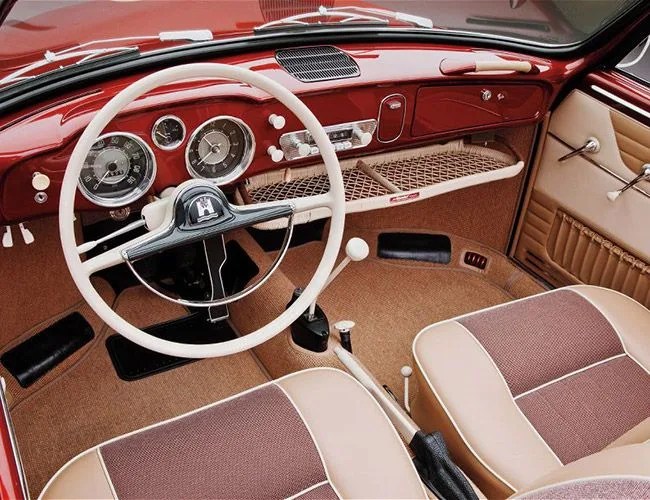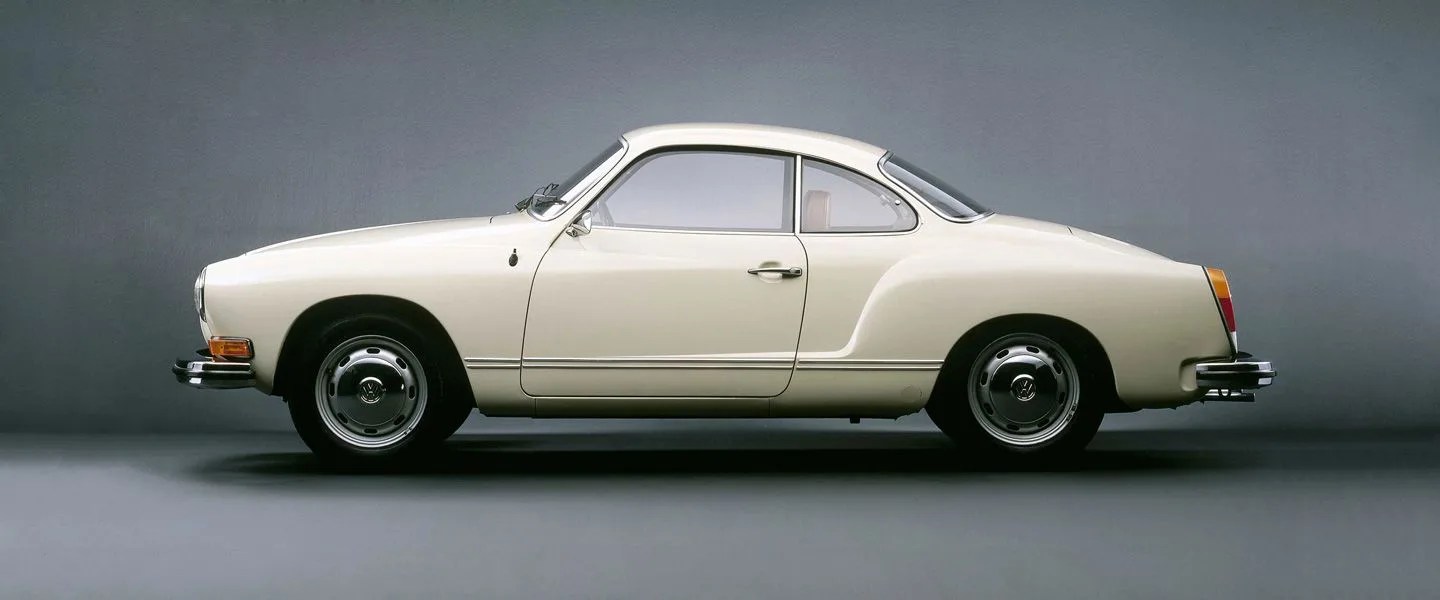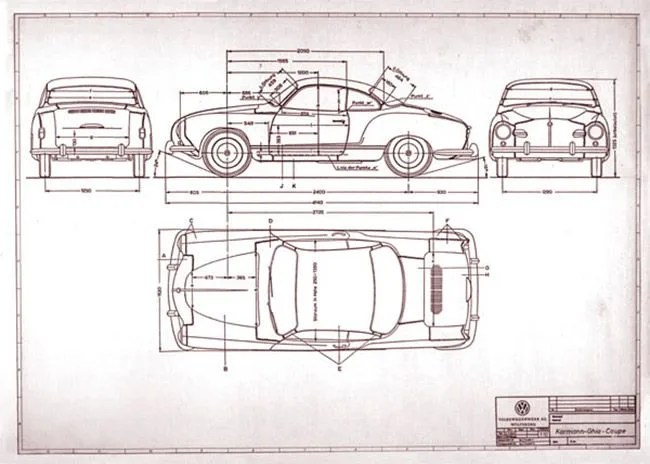Some vintage cars get respect without being wildly expensive, exceptionally elitist or notably rare. Volkswagen’s Type 14 Karmann Ghia is both an automotive gem and an affordable sports coupe — a well-kept version can be had for under $20K. Built on the heels of the Volkswagen Beetle (known in the 1950s as the Type 1), the Karmann Ghia, which launched in 1955, was the sports car created for a new Germany and a new world — and one that would generate a cult following for generations. And though it never set any speed records, it most certainly set automotive hearts on fire.
MORE INFLUENTIAL AUTOMOTIVE ICONS: The Ferrari F40 | The Porsche 917 | The Lancia Stratos
What It’s All About
The iconic Beetle was originally created as the first Volkswagen or “people’s car”; it was never intended to be anything more than transportation for the masses that was reliable, inexpensive and easy to repair. The Type 14, however, was created to change the way people thought about VWs. World War II was over, and by the late ’40s and early ’50s Volkswagen needed to build something more than just utilitarian vehicular slugs like the Beetle and the VW Type 2 Bus. The Volkswagen Type 14 Karmann Ghia was the rich man’s Volkswagen (like the 914 was the poor man’s Porsche).
VW started talking with German coach-builder Karmann to work on the new car, and Karmann turned to Italian design carrozzeria Ghia for the design. Ghia had already designed a version of what would become the Type 14 for Chrysler, but Chrysler didn’t move forward on it. So when Karmann approached, Ghia modified the design to fit the VW platform and gave it to Karmann and VW. Built and marketed as a 2+2 sports car, it had the underpinnings of the Beetle but a slick body that looked nothing like the Type 1, save for a penchant for rounded surfaces.
The body was penned by the owner of Italian design firm Ghia, Luigi Segre, then hand built by Karmann. Back then, “hand built” meant painstaking shaping, welding and smoothing the same way high-end exotics were crafted. What VW, Karmann and Ghia did together was nothing short of miraculous, producing the Karmann Ghia for far less than other hand-built cars, keeping it within reach for the average human without losing the high standard of German manufacturing.


